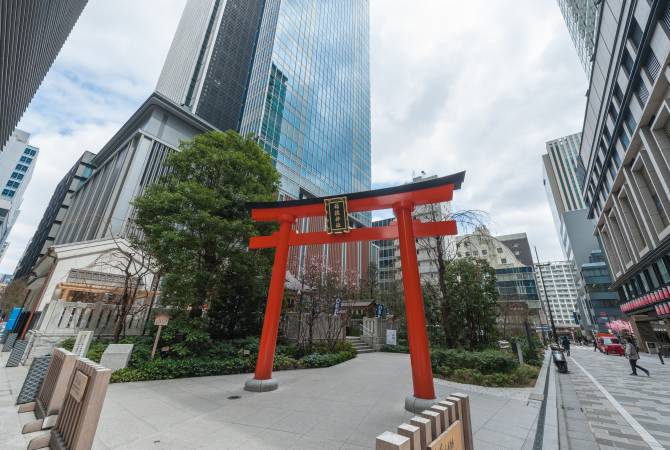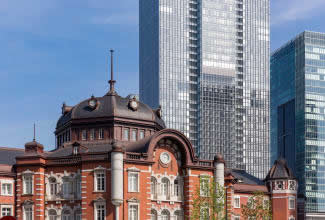
- Share this page
Share this page
- EN
Select Language
- FAVORITES
- Search
Detailed search: You can do a detailed search by keyword, genre, time, area and tag.
Main content starts here.
- Visit Tokyo |
- SPOT |
- Central Tokyo |
- Nihonbashi – a bridge between traditional and modern Tokyo
Updated: June 17, 2025
Nihonbashi – a bridge between traditional and modern Tokyo
A tale of two cities—where traditional Tokyo meets the modern metropolis
Close to Ginza and Tokyo Station, the city district of Nihonbashi blends traditional charm with ultra-modern architecture. A major commercial center in the Edo period (1603-1867), it was the starting point of the five major roads across Japan, and distances are still measured from here. Urban planning has largely respected the area's traditional roots, blending modern skyscrapers with shrines, bridges and historic department stores. You will find dazzling kimono stores, specialists in seaweed, soy sauce, gold leaf and steel knives alongside venerable restaurants, re-housed in modern spaces that echo traditional Edo period motifs. Discover Tokyo's traditions behind gleaming facades.
How to Get There
Nihonbashi is centrally located, an easy walk from Tokyo Station and accessible by bus and train. Nihombashi Station is on Tokyo Metro's Tozai, Gina and Toei Asakusa Lines. Along with Nihombashi Station, the area can also be accessed on the Tokyo Metro, from the Ginza Line station of Mitsukoshimae, the Hanzomon Line station of Suitengumae, the Tozai Line station of Kayabacho, and the Hibiya and Toei Asakusa Line station of Ningyocho.
From Haneda Airport: 25 minutes by Limousine Bus to Tokyo City Air Terminal (T-CAT), or 35 minutes by train.
From Narita Airport: 90 minutes by Limousine Bus to Tokyo City Air Terminal (T-CAT), or 80 minutes by train.
From Shinjuku Station: Take Tokyo Metro's Marunouchi Line to Akasaka-mitsuke. Transfer to the Ginza Line to Nihombashi Station. Total journey time: 31 minutes.
From Tokyo Station: Take the JR Yamanote Line to Kanda Station. Transfer to the Ginza Line to Nihombashi Station. Total journey time: 13 minutes.
Shop in style, then dine at some of Tokyo’s most fashionable restaurants
Nihombashi Mitsukoshi Main Store, the oldest department store in Japan, was founded in 1673 as Echigoya, a first-class kimono store, and became Japan's first department store in 1904. Nihombashi Takashimaya S.C. is also one of the most historic department stores in Japan, where you can admire the 1930s architecture whilst browsing the store. Both are located on Chuo-dori, the main street that runs north-south across the stone Nihonbashi Bridge. You can also visit the gleaming modern Coredo Muromachi building for a blend of traditional specialist stores, modern crafts and fashionable restaurants. The backstreets are filled with independent retailers selling everything from traditional sweets to bespoke chopsticks.




Cultural crossroads
Explore Tokyo's labyrinthine waterways on one of the river cruises starting near the Nihonbashi Bridge. Alternatively, stay on dry land and join one of Coredo Muromachi's Cultural Experience Tours, including tea ceremony, wearing kimono or making traditional crafts. Home to many companies in the financial and commercial sectors, Nihonbashi also has world-class museums and galleries, including the Mitsui Memorial Museum, which houses traditional Japanese works of art, and the Kite Museum, which exhibits a selection of kites from all over Japan, including Edo kites.


